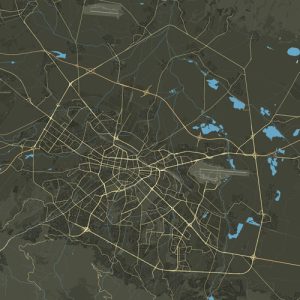In the 19th century, Panagyurishte experienced a real economic boom thanks to the crafts. In 1876, it was the center of the 4th revolutionary district, which was the reason why, after the suppression of the uprising, the city was burned down and completely destroyed. Therefore, there are almost no surviving Renaissance houses in it. Only a few buildings remain, such as the Tuteva House, where the uprising was announced on April 20, 1876.
It also preserves the guest room where the apostles stayed and the vocation to the Bulgarian people was written. And one of the copies of the “Bloody Letter” that started the uprising is kept in the city’s historical museum.
The historical area of Oborishte is located 8 km from the town of Panagyurishte and is associated with one of the brightest pages in the history of the Bulgarian people.
From April 14 to 16, 1876, the First Bulgarian National Assembly met in this place.
The Bulgarian Central Revolutionary Committee in Giurgevo, at the end of 1875 and the beginning of 1876, decided to declare an uprising in Bulgaria. On April 4, he sent a district letter to the settlements of the four revolutionary districts, as the country was divided. Four days after the letter arrived, the delegates elected by the people began to arrive. The meeting was attended by 64 delegates with regular powers, and in total there are more than 300 people. The forest meadow serves as a meeting hall for the people’s elected officials. The delegates sit at a table, on which are placed for the oath a sword, a pistol and the ecclesiastical cross of Pope Gruyu. Gas lanterns are hung on the surrounding trees. A prayer was performed. Delegates are sworn in. This is a unique enchanting picture, which according to Zahari Stoyanov-delegate, remains sealed in the memory of those present.
The meeting of Oborishte is led by Georgi Benkovski, and the most important question concerns the leadership of the uprising. After heated debates, Georgi Benkovski and Panayot Volov were accepted as managers.
After three days of meetings and lively debates, the assembly accepted that the uprising be declared on May 1, 1876, and worked out tactics for fighting. He also chooses a committee to develop a comprehensive, detailed plan for announcing and carrying out the uprising.
The area where the First National Assembly was held has been declared historic. Here, the grateful Bulgarian people from all over the country come to worship before the white stone monument erected in 1928 to commemorate this great event in our history.
At the bottom of the monument are written the names of the apostles and the participants in the assembly – people who have become legends for generations. In honor of the 100th anniversary, a monument to the April Uprising was erected in Panagyurishte. Therefore, national celebrations are held here every year on May 1 and 2.
Work time:
Free access. There are no entrance fees.
Upon prior request, the Historical Museum in Panagyurishte can provide a curator to come with the tourists on site. The conversation is only in Bulgarian.
Contacts:
Historical Museum , 26 “Rayna Knyaginya” St
Tel: +359 357 63712
http://www.museumpan.hit.bg/

